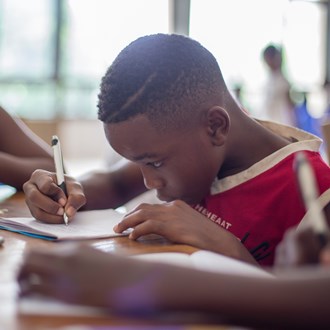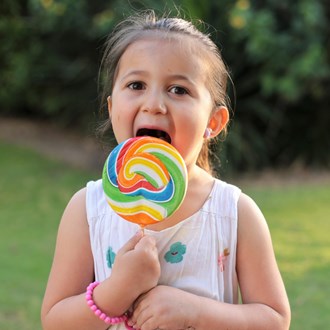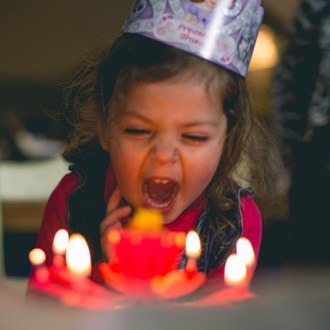Head lice 101: a guide to detecting and getting rid of nits

While head lice are no-one’s idea of fun, the good news is they are relatively harmless and easy to deal with.
By Practical Parenting team
January 09 2019
It’s a new year, and a time for new adventures, especially for those of us with little ones going to preschool or big school. Unfortunately, this time of year also coincides with kids coming into contact with some potentially yucky problems, one of which is head lice. “Head lice are the bane of most parent’s lives,” says Deborah Moore, a nurse at Belrose Medical Centre in Sydney. “Along with worms, they are one of the most prevalent childhood health issues.” But while head lice aren’t much fun to deal with, they are not harmful either. Here’s the low-down on the critters and how to deal with them.
What are head lice?
Head lice (Pediculosis capitis) are tiny, wingless insects that live, breed and feed on the human scalp. They have been around for millions of years and are very common among school-aged children. Female lice lay between three to eight eggs – or nits – a day on the scalp . The eggs stick to the hair fibres, close to the scalp. Head lice don’t have wings or the ability to jump, they can only crawl. Once the eggs hatch, lice are known as nymphs. Nymphs and adult lice are a greyish-tan colour and are around 2-3.5mm long, making them difficult to spot.
What are the symptoms?
“The most obvious sign of head lice infestation is scratching,” says pharmacist Debby Liu. “But children do not always scratch, so the best way to check is to look closely at the scalp and you’ll see little white dots (eggs).”
The eggs may look like dry skin or dandruff, but the difference is that they cannot be swept away easily, as they adhere to the hair shaft. It is very important to detect and treat head lice early, Liu says. “If children scratch for a long time they may break the skin around the scalp and nape of the neck.”
How do head lice spread?
Head lice spread through head-to-head contact with other people. As they cannot jump or fly, they need the close contact to crawl from one person’s head to another. This is why they are so common among small children and their families – because these groups play, cuddle and work closely together. Head lice rarely fall off the head, as they need blood and warmth to survive. Without blood, they usually die within six to 24 hours.
How can they be treated?
There are two common ways to treat head lice; the “conditioner and comb” method, and the use of over-the-counter insecticide products, which can be bought in pharmacies. While both methods are effective, they usually need to be repeated several times over the course of a few days or weeks to ensure all the critters and eggs have been eliminated.
The conditioner and comb method involves combing thick hair conditioner onto dry hair. This makes it difficult for the lice to grip the hair or move around, so they are easier to spot and catch. Use a head lice comb and work your way slowly through the hair, wiping the conditioner onto a paper towel or tissue and checking for lice and eggs. Repeat the combing for every part of the head three or four times . You will then need to repeat this process every second day until no live lice have been found for 10 days.
Insecticides come in the form of lotions and shampoos. Lotions are generally applied to dry hair, while shampoos can be applied on slightly damp hair. Rub the treatment in thoroughly, then leave for the required time – sometimes at little as 15 minutes, while other treatments need to be left in overnight. It’s important to note that no topical treatment will wipe out all the lice, so the treatment will need to be performed again on day seven and day fourteen after the initial treatment.
“While the treatments are great and the combing doesn’t take too long, it is a long and arduous task and requires little people to sit still for long periods - which is almost impossible,” Sally says. “That said, there is a massive difference between treating short, thin hair and long, thick hair.”
Everyone in the household who has been affected needs treatment, however for young babies and toddler you may wish to avoid using insecticides. “There are some treatments that can be used from six months of age, but babies have less hair so it might just be better to do wet combing,” says Liu.
If the person being treated is under 12 months of age, pregnant or breastfeeding, has allergies, open wounds on the scalp or asthma, check with your pharmacist or GP before using insecticides.
Can head lice be prevented?
There are no products available that can prevent head lice, but tying long hair back – in ponytails or plaits, for example – can help stop the spread. Checking weekly for lice using the conditioner and comb method also helps keep the critters in check. Avoid sharing combs, brushes or hats, clean brushes and combs in hot, soapy water and remind your child to avoid head-to-head contact with other children.
Some mums use hair spray on their child’s hair as it is thought to help prevent the lice from latching on to the hair, or dab tea tree oil behind the child’s ears daily. Other mums swear by using dental mouthwash. While anecdotally they may be said to work, experts aren’t convinced. “While I have heard of these methods I can’t say for certain if they work as there is just not enough evidence,” Liu says.
Does my child need to stay home if they have head lice?
If your child is found to have head lice at school or daycare, you will be notified so that you can arrange treatment. The school should also let other parents know so they are aware of the issue and can check and treat their own children if necessary.
According to the Public Health and Wellbeing Regulations, children with head lice can return to school once head lice treatment has started. A doctor’s note is not needed before your child goes back to daycare or school.













